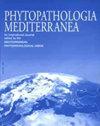Activity of essential oils from Syzygium aromaticum and Rosmarinus officinalis against growth and ochratoxin A production by Aspergillus tubingensis and Aspergillus luchuensis from Moroccan grapes
IF 1.9
3区 农林科学
Q2 AGRONOMY
引用次数: 1
Abstract
Essential oils have been used since ancient times in traditional medicine and agri-food science to preserve food, and to combat human diseases. Essential oils (EOs) from clove and rosemary, obtained by hydro-distillation, were analyzed by GC/MS and evaluated for their antifungal activity against strains of Aspergillus tubingensis and A. luchuensis and their effect on ochratoxin A (OTA) production by these fungi. The major constituent of clove EO was eugenol (86.4%), and of rosemary EO was eucalyptol (35.9%). Mycelium growth inhibition assays showed that the EOs had dose-depend inhibition effects, which reached 36.6% for rosemary EO, and 100% for clove EO, at EO concentration of 200 μL L-1. These reductions were different for different Aspergillus strains, the essential oil type, and the strain/oil type interaction. Analyses of OTA in the culture medium extracts of Aspergillus strains was carried out using HPLC-FLD, and was confirmed by LC-MS/MS for positive controls of two OTA-producing strains of A. tubingensis. In general, OTA was reduced (from 45 to 100% reduction), except for two strains of A. tubingensis, where OTA production was stimulated.香合香精油和迷迭香精油对摩洛哥葡萄中塔根曲霉和鲁楚曲霉生长和产生赭曲霉毒素A的抑制作用
精油自古以来就被用于传统医学和农业食品科学中,用于保存食物和对抗人类疾病。用GC/MS分析了通过加氢蒸馏获得的丁香和迷迭香精油(EOs),并评价了它们对图宾根曲霉菌(Aspergillus tubingensis)和鲁丘曲霉(A.luchuensis)菌株的抗真菌活性及其对这些真菌产生赭曲霉毒素A(OTA)的影响。丁香EO的主要成分为丁香酚(86.4%),迷迭香EO为桉树醇(35.9%)。菌丝生长抑制试验表明,在EO浓度为200μL L-1时,EO对迷迭香EO和丁香EO的抑制作用分别达到36.6%和100%。对于不同的曲霉菌株、精油类型和菌株/油类型的相互作用,这些减少是不同的。使用HPLC-FLD对曲霉菌菌株的培养基提取物中的OTA进行分析,并通过LC-MS/MS对两株产生OTA的tubingensis菌株的阳性对照进行确认。总的来说,OTA减少了(从45%减少到100%),但两株A.tubingesis除外,其中OTA的产生受到刺激。
本文章由计算机程序翻译,如有差异,请以英文原文为准。
求助全文
约1分钟内获得全文
求助全文
来源期刊

Phytopathologia Mediterranea
生物-植物科学
CiteScore
4.40
自引率
8.30%
发文量
28
审稿时长
6-12 weeks
期刊介绍:
Phytopathologia Mediterranea is an international journal edited by the Mediterranean Phytopathological Union. The journal’s mission is the promotion of plant health for Mediterranean crops, climate and regions, safe food production, and the transfer of new knowledge on plant diseases and their sustainable management.
The journal deals with all areas of plant pathology, including etiology, epidemiology, disease control, biochemical and physiological aspects, and utilization of molecular technologies. All types of plant pathogens are covered, including fungi, oomycetes, nematodes, protozoa, bacteria, phytoplasmas, viruses, and viroids. The journal also gives a special attention to research on mycotoxins, biological and integrated management of plant diseases, and the use of natural substances in disease and weed control. The journal focuses on pathology of Mediterranean crops grown throughout the world.
The Editorial Board of Phytopathologia Mediterranea has recently been reorganised, under two Editors-in-Chief and with an increased number of editors.
 求助内容:
求助内容: 应助结果提醒方式:
应助结果提醒方式:


